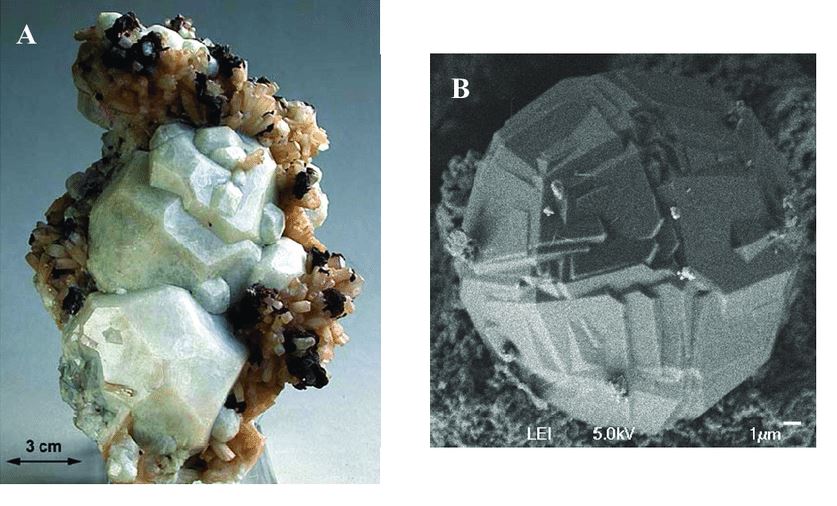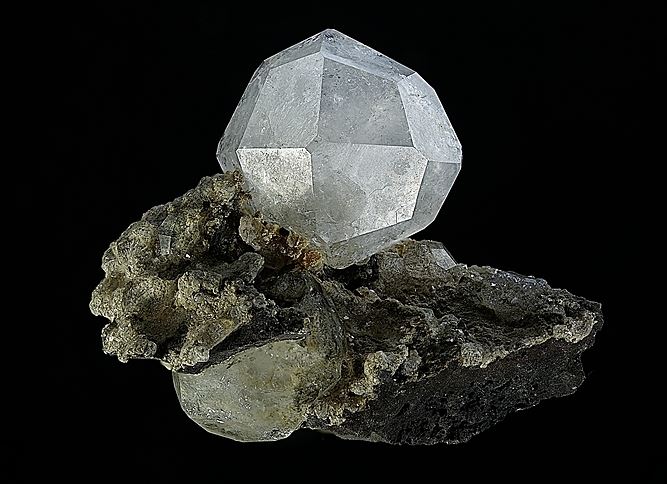Brief Overview of Analcime
Analcime is a unique mineral that belongs to the zeolite group, which is distinguished by its porous and crystalline structure. This mineral is composed of hydrated sodium aluminum silicate, giving it a distinctive framework that can interact with various chemical substances. These structural properties allow analcime to function effectively in a wide range of applications, making it particularly valuable across multiple industries, from chemical processing to environmental remediation. Its versatility is due to its zeolitic structure, which can absorb, exchange, and catalyze chemical reactions, making it an asset in sectors that require efficient material handling and chemical reactions.
Purpose of the Blog
This blog aims to explore the many applications of analcime in detail, showcasing its roles across various industries. By understanding analcime’s properties, we can appreciate how it serves as a natural catalyst in chemical processes, supports building material production, enhances soil quality in agriculture, and even aids in water purification. This exploration will highlight how the unique properties of analcime are harnessed to meet the needs of industry, agriculture, construction, and environmental sustainability.
Analcime in Industrial Applications
Role as a Natural Catalyst in Chemical Processes
Analcime’s zeolitic nature makes it a valuable natural catalyst in the chemical industry. The mineral’s internal framework allows for effective molecular interactions, which can enhance the rate of chemical reactions. In industrial settings, analcime plays a crucial role in processes such as gasoline production and the synthesis of various chemicals, where it promotes more efficient reactions without the need for excessive energy inputs. Its capability to facilitate chemical transformations not only saves energy but also improves the overall efficiency of industrial processes that require precise and stable catalysts.
Chemical Properties that Enhance Reaction Efficiency
The chemical makeup of analcime, consisting of hydrated sodium aluminum silicate, further amplifies its catalytic effectiveness. This structure enables it to interact seamlessly with other chemicals, stabilizing reactions and supporting efficient production processes. The mineral’s ability to retain and gradually release certain ions contributes to reaction control, which is especially useful in processes requiring steady, predictable interactions. Through these properties, analcime improves the reliability and quality of chemical production, underscoring its importance in industries that depend on high-performance catalysts.
Uses of Analcime in Construction
Lightweight Aggregate in Building Materials
Analcime is widely used as an aggregate in construction materials like concrete and plaster. Its unique crystalline structure makes it a lightweight material, which helps reduce the overall weight of building materials without compromising their strength or durability. By incorporating analcime into concrete, for example, builders can create structures that are easier to handle, transport, and install. Additionally, its stability under various environmental conditions ensures that these materials maintain their integrity over time, making it a valuable component in lightweight, long-lasting construction projects.
Filler for Plastics and Paper
In the manufacturing of plastics and paper, analcime is used as a filler to add bulk and volume to these products. This addition increases the volume of the final product while keeping it lightweight, which is essential for maintaining flexibility and usability. For instance, in plastic manufacturing, analcime can be integrated into products to reduce costs without impacting the material’s quality. Similarly, in the paper industry, analcime acts as a lightweight additive, enabling manufacturers to produce a durable product that remains easy to handle and transport.

Analcime in Agriculture
Soil Conditioner and Fertilizer Additive
Analcime has gained attention as a valuable soil conditioner and fertilizer additive in agriculture. Its porous nature allows it to retain water effectively, which is crucial in areas with limited rainfall. When added to soil, analcime can hold moisture for longer periods, reducing the need for frequent watering and benefiting crops in drought-prone regions. Additionally, its ability to exchange ions helps in delivering essential nutrients to plants, supporting healthier crop growth and improving soil fertility over time.
Improving Soil Structure for Plant Growth
Beyond water retention, analcime’s structure also aids in gradually releasing nutrients into the soil, providing plants with a steady supply of necessary minerals. This controlled release prevents nutrient leaching and ensures that plants receive nutrients as they grow, ultimately supporting more robust root development and sustained plant health. By improving soil structure and maintaining a balanced nutrient profile, analcime contributes to increased agricultural productivity, making it a valuable addition to both conventional and organic farming practices.
Environmental Applications of Analcime
Water Treatment and Pollution Control
Analcime’s porous, zeolite-like structure makes it highly effective in environmental remediation, especially in water treatment applications. Its structure allows it to act as a natural filter, absorbing and removing contaminants like heavy metals and other pollutants from water sources. This ability is especially valuable in areas impacted by industrial waste, where water quality may be compromised by harmful substances. By trapping these pollutants, analcime can help purify water, making it safer for consumption and environmental discharge. Its effectiveness in filtering contaminants highlights its potential role in advanced water purification systems, positioning it as a promising solution for pollution control and environmental cleanup.
Sustainability and Future Potential in Environmental Cleanup
As environmental sustainability becomes a priority worldwide, analcime’s capabilities offer a sustainable option for pollution management and natural water treatment. Its reusability and efficiency in trapping pollutants make it a greener choice compared to synthetic alternatives. As research advances, analcime may become a staple in environmental cleanup efforts, with potential applications not only in water treatment but also in soil and air purification. This positions analcime as a vital material for sustainable environmental solutions, addressing pollution while promoting cleaner, healthier ecosystems.
Conclusion
Summary of Analcime’s Versatile Applications
From acting as a catalyst in industrial chemical processes to improving construction materials, enriching soil for agriculture, and aiding in environmental remediation, analcime’s unique properties make it an incredibly versatile mineral. Its zeolitic structure and chemical composition enable it to serve various roles across different industries, proving valuable in processes that enhance efficiency, reduce material weight, support crop growth, and promote environmental sustainability.
Encouragement for Further Reading
For readers interested in exploring the mineral’s detailed chemical properties and specific applications further, reliable sources such as the International Zeolite Association, All Minerals Rock, and Mindat provide comprehensive insights into analcime’s structure, formation, and industrial uses. These resources offer an in-depth look at how this mineral contributes to advancements across sectors, supporting both scientific and practical applications.
FAQs about Analcime and Its Uses
1. What is analcime, and what are its main properties?
Analcime is a mineral from the zeolite group, recognized for its porous, crystalline structure. This structure allows it to interact with various chemicals, making it useful in different industries. Composed of hydrated sodium aluminum silicate, analcime is valued for its ability to act as a natural catalyst, absorb pollutants, and contribute to sustainable solutions.
2. How is analcime used in industrial applications?
In the industrial sector, analcime serves primarily as a natural catalyst in chemical processes, particularly in gasoline production and chemical synthesis. Its zeolitic properties enhance reaction efficiency, allowing industries to reduce energy use while optimizing production outcomes.
3. Why is analcime used in construction materials?
Analcime is used as a lightweight aggregate in construction materials like concrete and plaster, helping reduce the material’s weight without sacrificing strength. It is also added to plastics and paper as a filler, providing bulk and volume while keeping products lightweight and manageable.
4. Can analcime improve soil quality in agriculture?
Yes, analcime is beneficial as a soil conditioner and fertilizer additive. It enhances water retention and nutrient delivery, making it valuable for crop growth. Its ability to retain moisture and release nutrients gradually also supports sustainable agricultural practices, particularly in regions facing water scarcity.
5. What role does analcime play in environmental applications?
Analcime is increasingly important in environmental remediation, especially for water treatment and pollution control. Its porous structure allows it to absorb and remove pollutants, including heavy metals, from contaminated water. This makes analcime a sustainable choice for advanced water purification and pollution management efforts.
6. How does analcime contribute to sustainability?
Analcime’s reusability, ability to filter pollutants, and support for environmentally friendly applications make it a sustainable choice in industries aiming to reduce their environmental impact. Its potential for future applications in soil, water, and even air purification supports global efforts toward greener, more sustainable practices.
7. Where can I learn more about the chemical properties and applications of analcime?
For more in-depth information, you can consult sources like the International Zeolite Association, All Minerals Rock, and Mindat. These organizations provide comprehensive details on analcime’s structure, formation, and various uses across industries.
